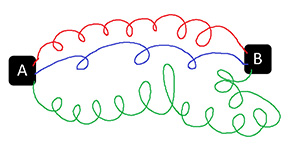In this article I want to look at the concept of equifinality in relation to the plan-do-check-act (PDCA) cycle. In systems theory, equifinality is defined as reaching the same end, no matter what the starting point was. This is applicable only in an open system, one that interacts with its external environment. This could be in the form of information, material, or energy. I want to focus particularly on the repeatability of the PDCA cycle.
|
ADVERTISEMENT |
PDCA is the framework for the scientific method. If three different people, with different ways of thinking, are facing the same problem, can all three reach the same end goal using the PDCA process? This would imply that equifinality is possible—see the illustration below. Point A is the initial condition, and point B is the final desired condition. The three different colored lines depict the three different thinking styles.

…
Add new comment